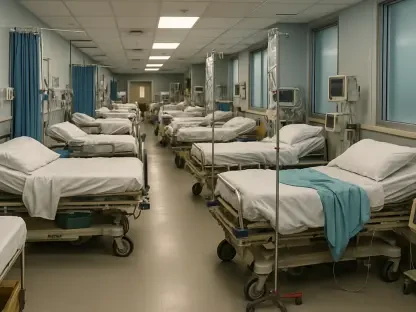Introduction: A Preventable Tragedy Unfolds in Texas
In early 2023, Texas became the focal point of the most severe measles outbreak in the United States in over three decades, revealing critical vulnerabilities in the nation’s public health framework. This crisis, which unfolded during the early months of Donald Trump’s second presidential term, resulted in over 4,500 cases and at least 16 deaths, including children, as the disease spread beyond state borders to neighboring regions and even into Mexico. The significance of this event lies not only in its devastating human toll but also in the systemic failures it exposed, particularly the political constraints imposed on the Centers for Disease Control and Prevention (CDC), which hindered timely intervention. Understanding the sequence of events and the impact of federal inaction is essential to grasp how a preventable disease escalated into a widespread epidemic. This timeline traces the key moments of the outbreak, highlighting missed opportunities and the consequences of delayed responses that turned a manageable health threat into a national tragedy.
Timeline of the 2023 Texas Measles Outbreak
The following chronology details the critical events that shaped the measles outbreak in Texas, illustrating how each development contributed to the escalating crisis. From the initial detection to the long-overdue federal response, these milestones provide insight into the cascading failures at both local and national levels.
Late January 2023 – First Cases Detected in West Texas
The outbreak began in late January 2023, when several unvaccinated children in Gaines County, a rural area in West Texas, were hospitalized with measles in Lubbock. This region, home to tight-knit Mennonite communities with historically low vaccination rates, offered an ideal environment for the highly contagious disease to take hold. Local health officials, including Katherine Wells, the public health director in Lubbock, quickly identified the potential for a larger epidemic and sought guidance from the CDC. However, no response came from the federal agency, marking an early and alarming sign of disengagement. This initial silence left local teams without the necessary expertise or resources, forcing them to tackle a growing threat in isolation.
Early February 2023 – Rapid Spread Across West Texas
By early February 2023, the outbreak had gained momentum, with cases multiplying rapidly across West Texas. The South Plains Public Health District, responsible for multiple rural counties and operating with a minimal staff of just 18, found itself overwhelmed by the scale of the crisis. Emails from officials like Wells reflected a mounting sense of desperation as hospitals reached capacity and contact tracing became nearly impossible, particularly among communities hesitant to cooperate with health authorities. The continued absence of CDC support during this crucial period allowed measles to spread unchecked, extending beyond Texas into neighboring states such as New Mexico and Oklahoma. This phase underscored the severe repercussions of delayed communication and the lack of federal backing for local efforts to contain the disease.
February 26, 2023 – First Child Death Sparks Public Alarm
A tragic milestone occurred on February 26, 2023, when a 6-year-old child in Texas became the first fatality of the outbreak. This heartbreaking loss, widely covered by media outlets, finally prompted a limited response from the CDC, with scientists reaching out to local officials like Wells. However, this engagement arrived far too late; by this time, hundreds of cases had already been confirmed, and the disease had entrenched itself in undervaccinated areas across the region. The child’s death highlighted the urgent nature of the situation and the heavy cost of federal inaction, drawing public attention to the crisis while failing to mitigate the damage already inflicted. It also exposed the acute vulnerability of children in communities where vaccine hesitancy, often fueled by misinformation, left many unprotected.
March to April 2023 – Outbreak Reaches Devastating Peak
Between March and April 2023, the outbreak hit its peak, with over 4,500 cases reported across Texas and extending into other areas, including Kansas, Colorado, and Chihuahua, Mexico. This period saw at least 16 deaths, reflecting the catastrophic toll of the epidemic on affected communities. Local health departments, already grappling with insufficient staff and funding, were pushed beyond their limits, with hospital administrators repeatedly requesting emergency funds that never materialized. Compounding the crisis, misinformation spread by figures such as Health Secretary Robert F. Kennedy Jr., who advocated unproven treatments over vaccines, misled parents and delayed critical medical care. The immense suffering during these months was a direct consequence of earlier failures to act promptly and decisively at both local and federal levels.
May 21, 2023 – Federal Support Arrives Too Late
On May 21, 2023, long after the outbreak had reached its most destructive phase, Texas finally received assistance in the form of CDC epidemiologists and federal funding. While this support was a step forward, it could not reverse the toll already taken on communities across the state. The delayed intervention emphasized the extent of the ground lost in the preceding months, with thousands sickened, lives lost, and local health systems left financially and emotionally exhausted. This late response solidified the view among public health experts that political restrictions on the CDC had transformed a controllable situation into a national tragedy, establishing a troubling precedent for how future health crises might be mishandled.
Conclusion: Lessons Learned and Future Steps
The Texas measles outbreak of 2023 stood as a grim reminder of the fragility of public health systems under political pressure, with key milestones like the initial CDC silence in January, the first child’s death in February, and the peak devastation in March and April marking a series of preventable failures. The belated federal response in May further highlighted the critical need for timely intervention. Moving forward, it became imperative to address the erosion of scientific autonomy by establishing clear protections for agencies like the CDC against political interference. Rebuilding trust in undervaccinated communities through culturally sensitive outreach and investing in local health infrastructure emerged as actionable priorities to prevent similar tragedies. Exploring innovative solutions, such as mobile vaccination units and community-based education programs, also offered a path to strengthen preparedness. For those seeking deeper insight into this crisis and its implications, further reading on public health policy and vaccine hesitancy provided valuable context for shaping a more resilient future.









